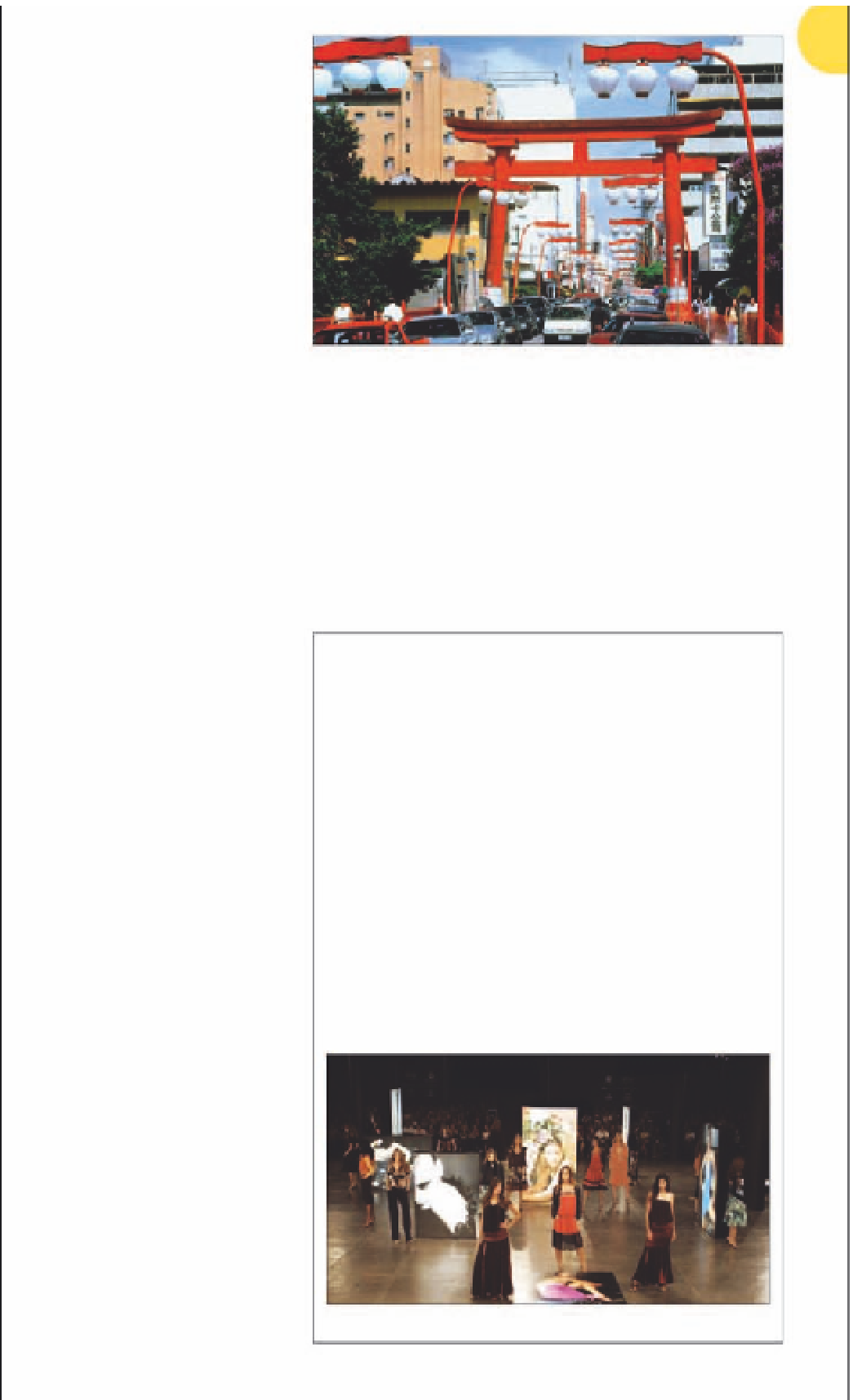Travel Reference
In-Depth Information
Liberdade
u
Praça da Sé, via Av da Liberdade.
q
Praça de Sé/Liberdade.
@
Liberdade Rodoviária.
São Paulo has more ethnic
Japanese than any other city
outside Japan. Liberdade,
located just south of the city
center, is the hub of the
Japanese community. The
neighborhood, small and
easily manageable on foot, is
best explored during the
afternoon. Streets are lined
with shops and restaurants
selling everything, from woks
and manga comics, to sushi
and sashimi. On Sundays,
there is a lively market in the
Praça de Liberdade
, where
stalls serve up steaming
lacquer bowls of miso soup
and yakisoba noodles.
Liberdade's main
thoroughfare, Rua Galvão
Bueno, runs south from this
square, lined with the bulk of
the shops and decorated with
red Japanese arches, or
torii
.
Many of Liberdade's most
traditional Japanese restau-
rants are located on, and
around, Rua Tomaz Gonzaga,
which cuts across Galvão
Bueno, south of the square.
At the corner of Galvão
Bueno and Rua São Joaquim,
an undistinguished block
houses the
Museu da
Imigração Japonesa
(Japanese
Immigration Museum). The
museum was opened in
1978 by the erstwhile prince,
now Emperor Akihito of
Japan. It has two floors of
artifacts and displays devoted
to telling the story of the
Japanese immigrant commu-
nity, their origins, and their
lives in early 20th-century
Brazil. These include a replica
of the
Kasato-Maru
- the ship
which brought the first immi-
grants in 1908
(see p169)
,
a complete early Japanese-
Brazilian agricultural cottage,
and a memorial to the
Dekasseguis - the Japanese
Brazilians who returned to
Japan to fight in World War II.
The building also features
a lovely rooftop garden.
One of São Paulo's many
Buddhist temples, built in
1995, the
Templo Busshinji
lies
west of the Museu da
Shrine Gate at Oriental Quarter Japanese Town, Liberdade
Imigração Japanesa on the
same street. Its traditional
Japanese-style architecture
comprising wood is topped
with a pyramid-shaped roof.
Visitors are welcome to attend
the various ceremonies, the
most impressive of which is
the Cerimônia de Kannon,
which takes place each
month. The rituals, paying
homage to the Buddha's
compassionate nature, are
accompanied by traditional
Japanese instruments.
E
Museu da
Imigração Japonesa
Rua São Joaquim 381.
Tel
(011) 3209
5465.
#
1:30-5:30pm Tue-Sun.
&
Templo Busshinji
Rua São Joaquim 285.
Tel
(011)
3208 4515.
#
9am-5pm daily.
8
by prior appointment.
SÃO PAULO FASHION WEEK
With Rosa Chá and Havaianas among its brands, and
supermodels Gisele Bundchen and Ana Beatriz Barros,
Brazil has rapidly risen to the upper echelons of the
fashion world in recent years. Established only in 1996,
São Paulo's fashion week is now Latin America's most
important fashion event. All of the top Brazilian names
and faces are showcased here, together with supermodels
from around the world. While the show is on, the city
erupts into a fashion frenzy. During this time, the fashion
fraternity can be spotted in fashionable bars and boutiques
throughout the wealthy corners of the city. Over 100,000
people visit the show itself, which takes place twice a year -
usually in January and June - in Oscar Niemeyer's Bienal
building in Parque do Ibirapuera
(see pp146-7)
. More
column inches are devoted to the event than to any other
activity in Brazil, except for soccer and political scandals.
The event generates an estimated $45 million through the
media alone, with more than 2,500 newspaper and maga-
zine pages and almost 200 hours of television coverage.
A fashion show in full swing, with models displaying a collection




































